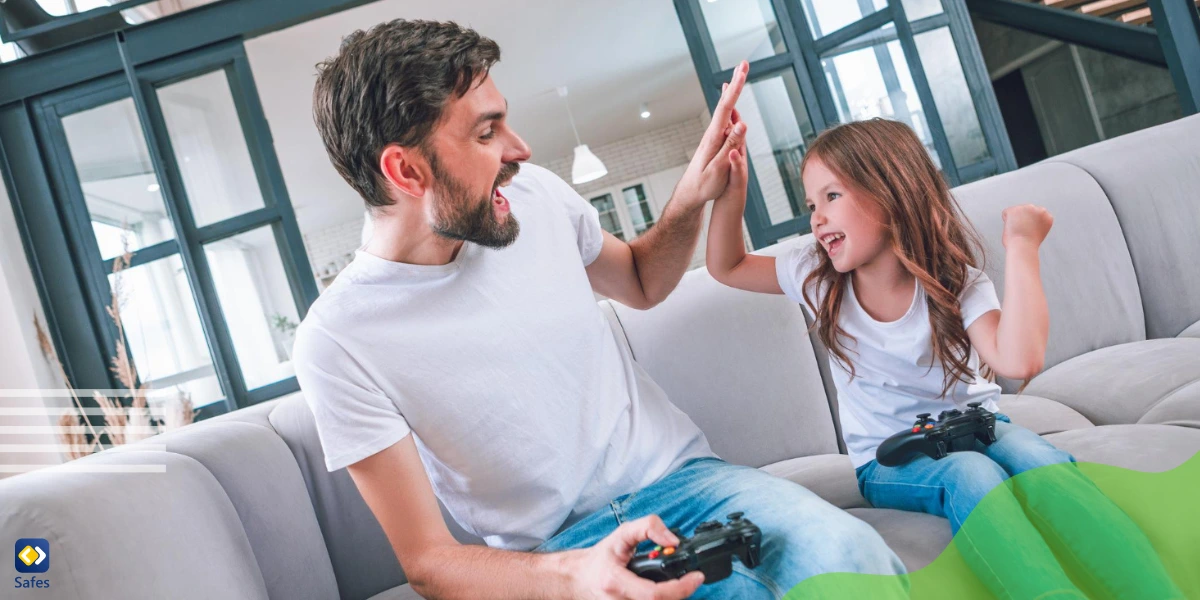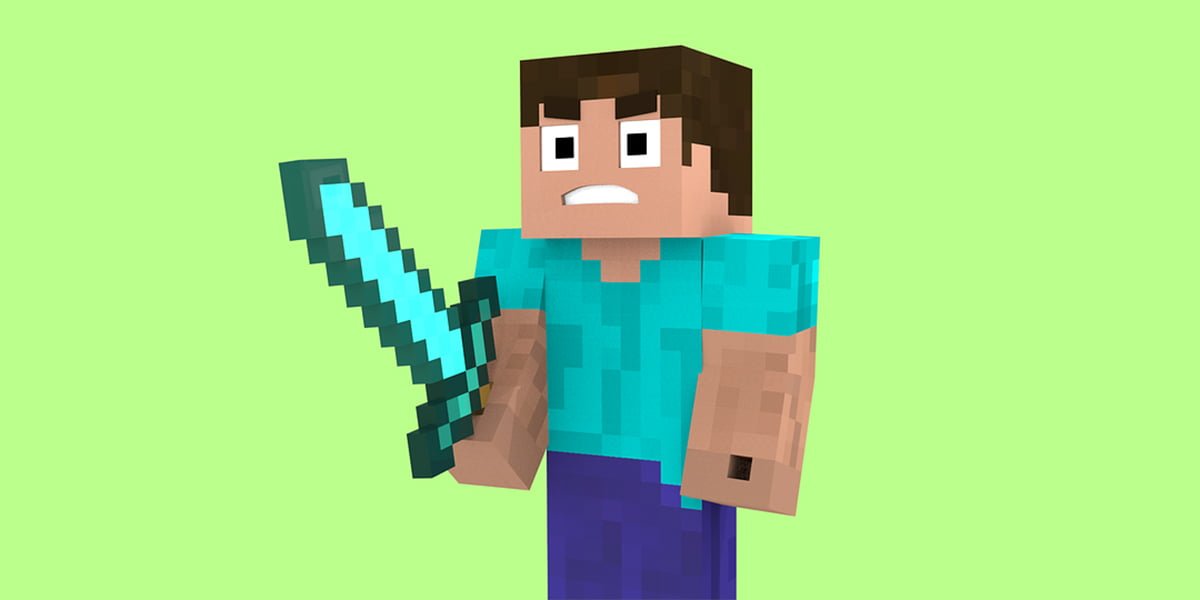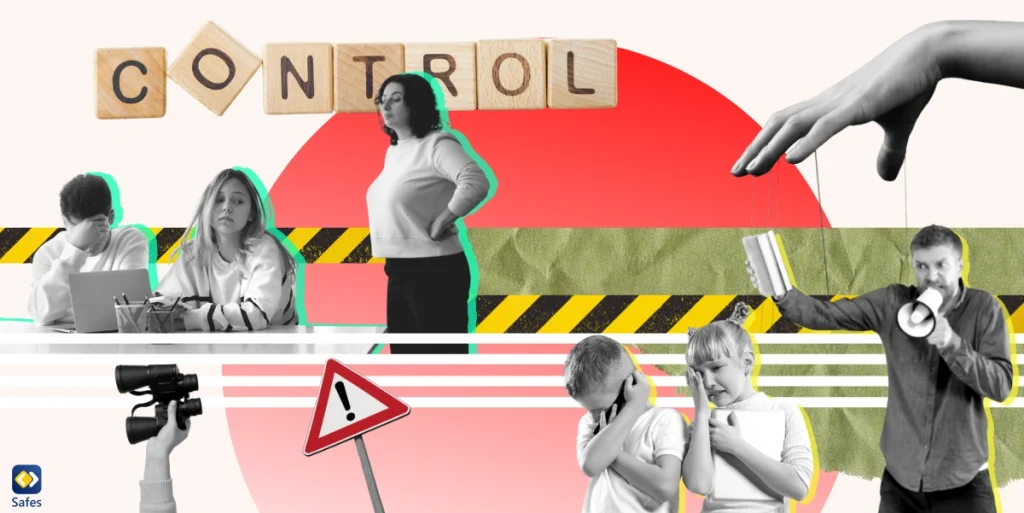As a parent navigating the digital landscape, ensuring your child’s online safety is a paramount concern. Minecraft, the immensely popular sandbox game, has captured the imaginations of millions of young players worldwide. However, amidst its creative freedom and endless possibilities, questions arise about its suitability for children. In this comprehensive guide, we delve into the intricacies of Minecraft, addressing parental concerns, and providing valuable insights on the question “Is Minecraft Safe for Kids?” to help you make informed decisions about your child’s gaming experience.
Download and Start Your Free Trial of the Safes Parental Control App
Understanding Minecraft: A Sandbox Adventure
Minecraft is a unique video game that allows players to explore, build, and create within a vast, blocky world. Unlike traditional games with predefined objectives, Minecraft offers an open-ended environment where players can let their imaginations run wild. From constructing intricate structures to battling hostile mobs (creatures), the game provides a canvas for endless creativity and problem-solving.
What Can My Kid Do in Minecraft?
Since Minecraft has no plot or objective, after your kid creates or joins a game, they begin a plotless journey in an infinite world. People usually start by creating a small shelter they call home and a farm to harvest resources. Your kid will also come across randomly created AI inhabitants of the world called villages with whom they can trade.
Mojang made the game to be primarily a survival experience. So, your kid will encounter challenges seen in other survival games. These challenges include having a health and a hunger bar, taking damage when falling from great heights, and fighting with various enemy creatures at night. To stay healthy, your kid must feed their character by finding them edible plants or hunting animals and cooking their meat. However, the main focus of Minecraft, as the title suggests, is on mining.
By mining the ground, your child can access valuable in-game materials like iron, silver, gold, and diamond. Using these items, they can create handy tools and armor and unlock new inventions like boats, carts that move on railroads, or even portals. However, the underground experience can be scary since most precious materials are usually guarded by hostile monsters called Creepers, Skeletons, Zombies, and Spiders.
Game Modes: Creative Freedom and Survival Challenges
Minecraft offers two primary modes of play: Creative and Survival. In Creative mode, players have access to unlimited resources, enabling them to build without limitations. This mode is often favored by younger children, as it eliminates the need for resource gathering and combat, fostering a pure focus on creativity and self-expression.
Survival mode, on the other hand, introduces challenges such as managing hunger, health, and fending off hostile mobs. Players must gather resources, craft tools, and construct shelters to survive in the ever-changing environment. While this mode may be more suitable for older children, it can also foster problem-solving skills, strategic thinking, and perseverance.

Online Safety: Multiplayer Modes and Parental Controls
One of the key features of Minecraft is its multiplayer mode, which allows players to interact and collaborate with others online. While this can foster social connections and teamwork, it also introduces potential risks, such as exposure to inappropriate language, bullying, or unwanted contact from strangers.
To mitigate these risks, Minecraft offers various parental control options and safety features:
- Chat Settings: Parents can disable or restrict the in-game chat function, preventing their children from communicating with others or receiving messages.
- Multiplayer Settings: The game allows parents to disable multiplayer mode entirely, limiting their child’s experience to a single-player environment.
- Profanity Filter: This feature helps to censor inappropriate language in public servers, providing an additional layer of protection.
- Minecraft Realms: Parents can create private servers, known as Realms, where they have complete control over who can join and participate, ensuring a safe and monitored environment for their children.
- Parental Controls on Devices: Most gaming consoles and devices offer built-in parental control features that allow parents to restrict access to certain content, set time limits, and monitor their child’s online activities.
Teaching Online Safety and Digital Citizenship
While Minecraft offers various safety measures, it’s equally important to educate children about online safety and digital citizenship. Open and honest conversations about responsible online behavior, recognizing potential risks, and seeking help when needed can empower children to navigate the digital world more confidently.
Parents can discuss topics such as:
- Identifying and reporting inappropriate or concerning behavior
- Maintaining privacy and not sharing personal information
- Recognizing and avoiding online predators or bullies
- Understanding the permanence of online actions and their potential consequences
- Practicing empathy and respect towards others in online interactions
Finding Child-Friendly Servers and Communities
While the official Minecraft servers are moderated and generally safe, many players choose to join third-party servers or communities created by other players. These servers can vary greatly in terms of content, moderation, and overall suitability for children.
To ensure a positive and age-appropriate experience, parents can explore and join child-friendly servers or communities. These servers often have strict rules and active moderation to maintain a safe and welcoming environment for younger players.
Some strategies for finding suitable servers include:
- Seeking recommendations from trusted sources, such as friends, parenting forums, or online communities dedicated to family-friendly gaming.
- Researching and reading reviews of popular servers to assess their suitability for children.
- Joining servers specifically designed for educational or family-friendly purposes.
- Monitoring and participating in the server’s community to understand its culture and values.
Balancing Screen Time and Fostering Creativity
While Minecraft can be an engaging and educational experience, it’s essential to strike a balance between screen time and other activities. Excessive gaming can lead to potential issues such as addiction, lack of physical activity, and neglect of other responsibilities or interests.
Parents can consider implementing strategies such as:
- Setting reasonable time limits for gameplay, incorporating breaks and encouraging physical activity.
- Encouraging creative pursuits outside of the game, such as drawing, building with physical blocks, or engaging in other hands-on activities.
- Promoting family time and shared experiences, such as playing Minecraft together or exploring other interactive activities.
- Monitoring their child’s behavior and emotional well-being, and addressing any signs of excessive gaming or addiction.
Educational Potential: Fostering Skills and Learning
Beyond its entertainment value, Minecraft can offer educational opportunities for children. The game’s open-ended nature and focus on problem-solving can foster various skills, including:
- Spatial reasoning and geometry through building and construction
- Creativity and self-expression through designing unique structures and environments
- Logical thinking and resource management in Survival mode
- Collaboration and teamwork in multiplayer settings
- Basic coding and programming concepts through the use of mods and command blocks
Parents can explore educational resources, such as lesson plans, tutorials, and online communities, to incorporate Minecraft into their child’s learning journey. Additionally, the game’s popularity has led to the development of educational versions, like Minecraft: Education Edition, specifically designed for classroom use.
- Related Article:
Addressing Potential Concerns: Violence and Addiction
While Minecraft is generally considered a relatively tame game, it’s important to address potential concerns regarding violence and addiction.
In Survival mode, players may encounter hostile mobs, such as zombies, skeletons, and creepers, which can be defeated or killed using various weapons and tools. However, the game’s blocky, stylized graphics and lack of realistic violence or gore make these encounters less intense than in other games.
Regarding addiction, Minecraft’s open-ended nature and endless possibilities can make it incredibly engaging and potentially addictive for some players. It’s crucial for parents to monitor their child’s gaming habits, set reasonable limits, and encourage a balanced lifestyle.
If concerns arise regarding excessive gaming or obsessive behavior, parents should not hesitate to seek professional guidance or support from counselors or mental health professionals.

Embracing Minecraft as a Family Activity
One of the most effective ways to ensure a safe and enriching Minecraft experience for children is to embrace the game as a family activity. By playing together, parents can actively monitor their child’s gameplay, provide guidance, and foster meaningful conversations about the game’s content and themes.
Family Minecraft sessions can become a bonding experience, where parents can appreciate their child’s creativity, problem-solving skills, and imagination. Additionally, parents can use the game as a teaching tool, introducing concepts such as architecture, engineering, or even basic coding through the use of redstone circuits and command blocks.
Utilizing Parental Control Apps: Safes
While Minecraft offers built-in parental controls and safety features, some parents may find it beneficial to utilize dedicated parental control apps to manage their child’s digital experiences more comprehensively. One such app is Safes, which provides a range of features designed to create a safe and secure online environment for children.
With Safes, parents can:
- Monitor and filter web content, blocking inappropriate websites and online content.
- Set screen time limits and schedule downtime to promote a healthy balance between digital and offline activities.
- Track their child’s online activities and receive detailed reports on their digital behavior.
- Utilize location tracking and geofencing features to ensure their child’s physical safety.
- Remotely manage and control their child’s device usage, even when they’re not physically present.
By leveraging the capabilities of Safes, you can gain greater peace of mind and ensure a more comprehensive approach to your child’s online safety, not just within Minecraft but across all digital platforms.
We invite our readers to explore Safes and take advantage of its free trial, allowing you to experience firsthand the benefits of a comprehensive parental control solution.
Conclusion: Embracing Minecraft’s Potential with Mindful Guidance
Minecraft is a remarkable game that offers boundless creative possibilities and educational opportunities for children. However, as with any digital experience, it’s crucial for parents to approach it with mindful guidance and a commitment to ensuring their child’s online safety.
By understanding the game’s mechanics, utilizing built-in safety features, fostering open communication, and embracing Minecraft as a family activity, parents can create a secure and enriching environment for their children to explore and learn.
Remember, the digital world is constantly evolving, and it’s essential to stay informed and adapt your approach as needed. Embrace the journey of navigating Minecraft with your children, and together, you can unlock the game’s full potential while maintaining a safe and responsible digital experience.

Frequently Asked Questions
Throughout our exploration of Minecraft safety, you may have encountered some common queries. Here are some frequently asked questions and their respective answers:
Is Minecraft Safe for My Kid?
Due to its mild violence, lack of in-game voice chat feature, and kid-friendly nature, Minecraft is considered to be generally safe for children. However, since it’s possible to contact other players through text chat and the fact that it can become addictive for children, Minecraft should be played with parental supervision. Generally, parental supervision is necessary when it comes to video games, especially if the game at issue is not entirely a solo experience.
Is Minecraft too Violent?
Violence in video games is one of the most concerning matters for responsible parents. But since Minecraft has a cartoony and pixelated design, the violence in the game is very mild. Killed creatures vanish in a puff of smoke and without showing any blood. Plus, you can make the game even less violent by setting the difficulty to Peaceful.
Is Minecraft too Scary or Challenging?
Mojang Studios has deliberately designed Minecraft to be kid-friendly both visually and gameplay-wise. The music, the world, and the enemies are cuter and more colorful than in other games. Plus, the fighting system in Minecraft is plain and simple: equip a weapon and press or hold a button to deal damage. But suppose your kid has difficulty fighting enemies. In that case, you can lower the difficulty to the Peaceful level, where no hostile creature would attack the player. All in all, it’s best to monitor your child’s reaction and performance as they play the game for the first time and adjust the game settings accordingly.
Can People Contact My Kid on Minecraft?
The good news is that Minecraft lacks an in-game voice chat feature. So, strangers will have a harder time interacting with other players. Moreover, it is harder for predators to spot children on Minecraft servers. However, while the game lacks verbal communication features, your kid can still interact with others using the game’s text chat feature. Plus, strangers may ask your little one to join a voice call on external apps like Skype or Discord. Discord is a social platform primarily used for gaming purposes, and it is not appropriate for kids under 13.
Can Minecraft Adversely Affect My Kid’s School Performance?
Not only does Minecraft have zero inappropriate content for kids, but it also has educational value thanks to its realistic building mechanics. So, while building windows for their new house in Minecraft, your kid will learn that glass is made by melting sand. However, if you don’t supervise your kid’s screen time, they may spend extended hours playing the game due to Minecraft’s addictive gameplay. And doing so may hurt their academic performance.
What Do Other Parents Think?
A few weeks ago, we asked a mother of an 8-year-old to play the game with her son, and here is her Minecraft parent review:
“Minecraft is great at encouraging children’s and adults’ creativity. After I spent time playing it with my kid, I realized the game is an excellent way to bond. But you better be aware of the microtransactions in the game. Kids may want to buy new worlds, or “Minecraft realms,” as my son has corrected me every time! You may want to teach your kids how buying these realms costs real money. Most game servers my son and I played on were okay, but make sure you check the servers your kid joins from time to time.”
Your Child’s Online Safety Starts Here
Every parent today needs a solution to manage screen time and keep their child safe online.
Without the right tools, digital risks and excessive screen time can impact children's well-being. Safes helps parents set healthy boundaries, monitor activity, and protect kids from online dangers—all with an easy-to-use app.
Take control of your child’s digital world. Learn more about Safes or download the app to start your free trial today!




